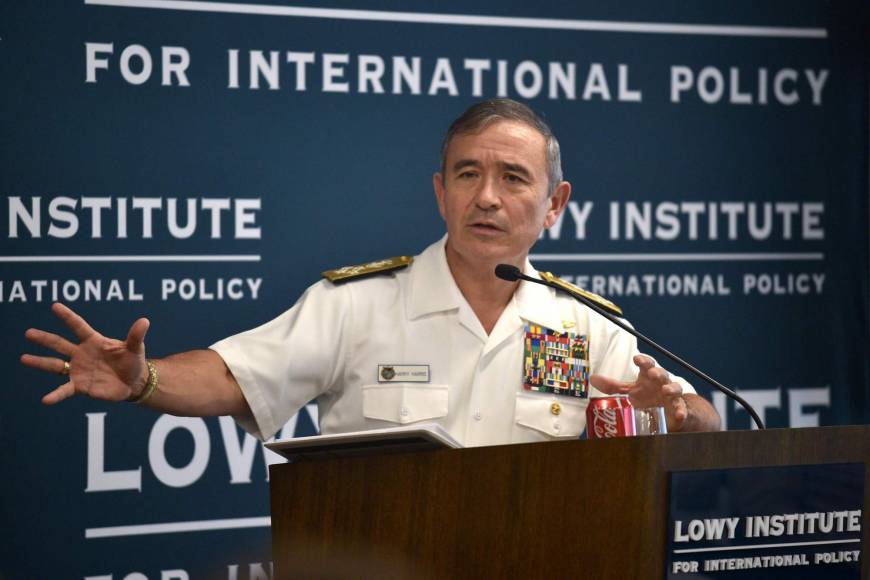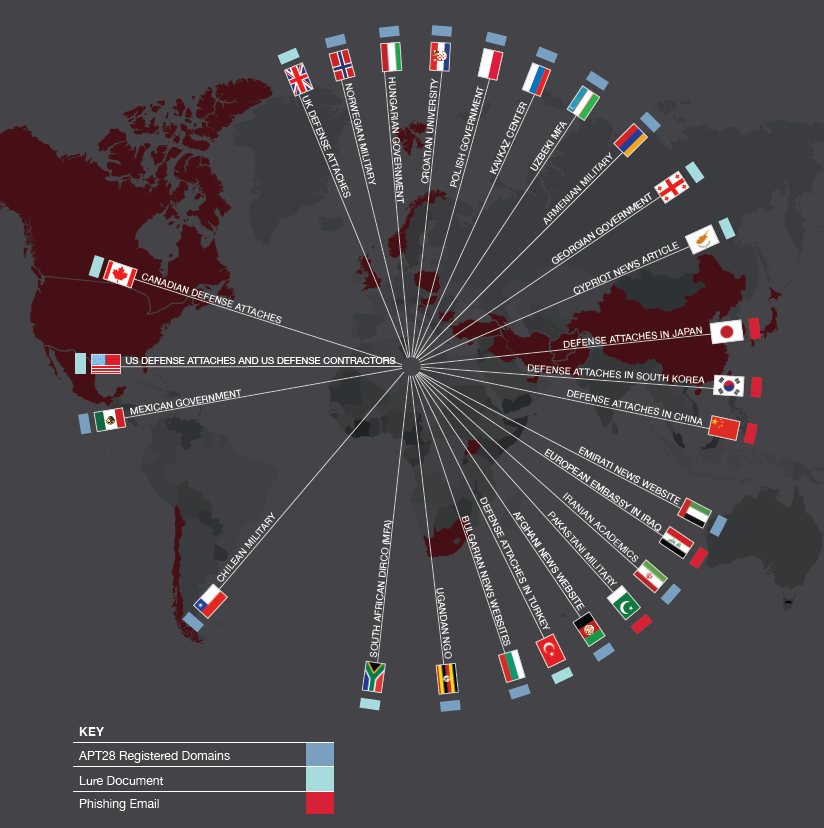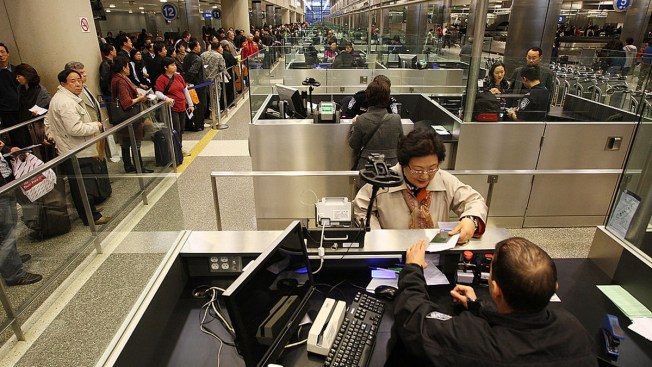This is a product of Politico but with shame, Politico wanted to add the race and gender as a twist to the article. Anyway, this Trump White House is busy for sure.
 Zimbio
Zimbio
The process and methodology on how Politico compile this report and summary is noted at the base of the post.
The people who have met with Donald Trump since he became president tend to have a lot in common, according to a database POLITICO compiled from public documents, media accounts and its own reporting: They’re mostly male, largely Republican and often rich.
Of the more than 1,200 people who have had direct access to the president as of Monday night, the majority — about 80 percent — are white. And almost 63 percent are white men.
Trump has huddled with at least 270 business executives and nearly 350 politicians — mainly Republicans but also dozens of Democrats. And he’s met in person or spoken by phone with 47 world leaders, most often the leaders of Japan and Germany, plus a vast grab bag of other figures, from pro golfers to rocker Ted Nugent to Matt Drudge.
Aside from Democrats in Congress, Trump has met with relatively few ideological opponents, according to the data. But there have been a number of exceptions: Zeke Emanuel, a doctor who served in the Obama administration and helped design Obamacare, took part in an Oval Office discussion in March, and the president has spoken with several CEOs who had previously donated to Democratic politicians.
This database is inevitably incomplete, partly because the White House — unlike the Obama administration — refuses to release a public log of its visitors. (Barack Obama’s version was not a full record of all his meetings either, of course.) Official White House media advisories about Trump’s activities have also left out information at times, failing to mention his encounters with Drudge or former Alaska Gov. Sarah Palin.
But POLITICO has compiled its own log, drawn from sources including White House schedules, news stories and pool reports filed by reporters who follow the president’s travels. The dataset is the most comprehensive public list available of the people who have had access to the president since Jan. 20, either in the White House, on the phone or in locations such as Mar-a-Lago.
Information about who meets with the president would be valuable to understanding any administration, offering a window into the range of interest groups and personalities that have an opportunity to shape the White House’s deliberations. That may be doubly true for Trump, who has been known to make decisions on the fly based on even brief conversations — for example, the 10-minute exchange with Chinese President Xi Jinping that he says changed his thinking about China’s influence on North Korea.
People who have met with Trump say he has a surprisingly informal and improvisational style, sometimes scheduling last-minute meetings after seeing people on cable television. The president is said to make frequent calls at night to his friends and trusted outside advisers, and he often holds court with Mar-a-Lago members during his trips to the club in Palm Beach, Florida.
The White House did not respond to repeated requests for comment on this story.
POLITICO will continue to update its records based on feedback from readers and sources inside and outside the administration. For now, here’s a breakdown of what it has found:
Business executives
Trump has talked to or appeared at events with at least 270 business executives, from JPMorgan Chase chief Jamie Dimon to PepsiCo’s Indra Nooyi and United Airlines’ Oscar Munoz.
About 75 percent of the executives who have gotten time with Trump are white men, according to POLITICO’s analysis. That lack of diversity also reflects the reality at many large companies: According to Forbes, women made up just 4.2 percent of the CEOs last year at the 500 largest U.S. companies. And a recent study found that women and minorities make up just 31 percent of the 500 largest U.S. companies’ boards.
Executives representing the finance, manufacturing, auto and energy industries met with Trump most frequently, according to POLITICO’s analysis.
Although all presidents have met with business leaders, Trump, a career businessman, seems particularly comfortable with them. These meetings also foster the public view Trump cultivated while sitting in the biggest chair in the boardroom on his TV series Celebrity Apprentice.
Meg Jacobs, a research scholar at Princeton University who has studied business-government relations, said the meetings with executives project the image “that he can get deals done, he’s a negotiator, a wheeler-dealer and he’s loved and effective.”
And this comfort with CEOs comes across in their meetings. Corporate heads who have met with Trump describe him as curious about which regulations hurt their bottom lines.
“He’s not, from the normal characterization of him, or even from his own tweets sometimes, what you would expect,” said Robert Murray, an outspoken Trump supporter who heads the coal company Murray Energy.
During the campaign, Trump spoke out against Wall Street and Big Business, running as a populist who would “drain the swamp” of Washington influence. For any executive who may have found that rhetoric unnerving, publicly meeting with CEOs sends a reassuring message that Trump will follow the classic Republican playbook of tax cuts and deregulation.
“Not a single member of the Obama administration made anyone from the coal industry welcome, nor would they give us any meetings,” said Murray, who has appeared with Trump twice since he took office. “We have a government now that’s wanting to hear on behalf of the electric power grid and the coal miners.”
Business executives’ priorities often align closely with Trump’s policy agenda. Murray, for example, said the administration has already tackled the first four agenda items on a list of policy recommendations he provided to Trump and Vice President Mike Pence.
Watchdog groups expressed concern over Trump’s heavy interaction with executives.
“There’s a risk of crony capitalism. Individual business leaders are very good at advocating for their individual company’s situation,” said Nick Schwellenbach, director of investigations at the Project on Government Oversight. “That does not necessarily translate to being better for the economy as a whole.”
Foreign leaders
Trump has spoken to or met with at least 47 world leaders since his inauguration. He has most frequently been in contact with German Chancellor Angela Merkel, Japanese Prime Minister Shinzo Abe, Canadian Prime Minister Justin Trudeau, British Prime Minister Theresa May and China’s Xi, based on POLITICO’s analysis.
Abe and Merkel are tied in the data for the most publicly announced interactions with the president, with the records showing that each leader has met with or talked to Trump seven times. Those include their visits to the United States, where Merkel huddled with Trump at the White House and Abe visited Mar-a-Lago.
Trump’s meetings reflect his foreign policy objectives, including concerns about North Korea’s aggression — Trump has spoken with South Korea’s acting president, Hwang Kyo-ahn, at least three times — and his ongoing deliberation about how to interact with the European Union.
The president has also made frequent contact with Middle Eastern and North African leaders, including Egyptian President Abdel Fattah el-Sisi (two phone calls and one in-person meeting), Iraqi Prime Minister Haider al-Abadi (two phone calls and one in-person meeting) and Tunisian President Beji Caid Essebsi (three phone calls), as well as top officials from Saudi Arabia, Kuwait, Qatar and the United Arab Emirates.
Politicians
Trump has wooed nearly 350 politicians of both parties since taking office. And according to POLITICO’s data, congressional Republican leaders Mitch McConnell, Paul Ryan, Kevin McCarthy and Steve Scalise have been his most regular guests as he pursued priorities including his push for health care legislation.
But Trump has also met with Democrats, including critics like Maryland Rep. Elijah Cummings, who later said he had told the president his rhetoric has been “hurtful” to African-Americans. Democratic House leaders Nancy Pelosi and Steny Hoyer also got time with Trump.
Still, his meetings have had a decidedly partisan tilt: He’s met with at least 250 Republican politicians and 92 Democrats, according to POLITICO’s records.
One of Trump’s home-state senators and frequent sparring partners, Senate Minority Leader Chuck Schumer (D-N.Y.), has visited the White House at least five times. Trump has also seemingly taken a liking to Democratic Sen. Joe Manchin, the moderate West Virginian who faces a contentious reelection fight in 2018 in a state Trump won handily. Trump and Manchin have met at least four times, more than any other Democratic senator except Schumer.
He’s also mingled with his former rivals on the campaign trail more than other Republican senators, based on the data. Trump has met with Florida Sen. Marco Rubio at least five times, and with Ted Cruz of Texas and Rand Paul of Kentucky at least four times apiece, including a golf outing with Paul.
Alaska’s Republican senators, Dan Sullivan and Lisa Murkowski, have both had above-average face time with the president, with at least five interactions for Sullivan and four for Murkowski.
One early Trump supporter, Georgia Republican Sen. David Perdue, has been rewarded for his loyalty, with at least five interactions with the president. The first-term senator is said to be close to members of Trump’s inner circle.
Florida Gov. Rick Scott has been Trump’s most frequent gubernatorial guest, with at least four interactions. He’s also met at least three times with New Jersey’s Chris Christie, a former presidential rival who briefly headed his transition, and is said to speak with Christie more frequently.
Cabinet secretaries
Secretary of State Rex Tillerson spent Trump’s earliest weeks enduring a reputation as a social outcast in the administration. But his stock has risen as he’s taken a leading role on Syria, Russia, North Korea and China — and the records show he has had more publicly disclosed direct contact with Trump than anyone else in the Cabinet.
Tillerson has met with the president at least 22 times, according to the analysis.
Treasury Secretary Steven Mnuchin, Homeland Security Secretary John Kelly, national security adviser H.R. McMaster and Transportation Secretary Elaine Chao also have had frequent interactions with Trump.
Commerce Secretary Wilbur Ross has also emerged as one of Trump’s go-to Cabinet officials, having joined the president repeatedly at Mar-a-Lago.
Others appear to have spent little time with Trump. POLITICO could document only four instances in which Housing and Urban Development Secretary Ben Carson has met with the president since he’s taken office, and just three for Energy Secretary Rick Perry.
The rest
Trump has met with a wide range of other figures. Trump welcomed Palin, Nugent and musician Kid Rock in April to the White House, where they posed mockingly underneath a portrait of Hillary Clinton.
An avid golfer, Trump played rounds with Rory McIlroy and Ernie Els on one of his Florida golf courses in February, which led to online blowback from some of the golfers’ fans. Former Yankees closer Mariano Rivera also sat down with Trump as part of a meeting on the opioid epidemic.
Trump reunited with friends Robert Kraft and Bill Belichick when they visited the White House with their Super Bowl champion New England Patriots in April. Some Patriots skipped the event to protest Trump’s policies, though Trump friend Tom Brady was absent as well. Team owner Kraft, a frequent guest at Mar-a-Lago, has enjoyed unprecedented access to the president, even sitting in on his dinner at the Palm Beach resort with the Japanese prime minister.
Trump has held more traditional meetings and photo opportunities, ranging from the presidents of historically black colleges and universities to Medal of Honor recipients. He’s also met with female small-business leaders and America’s national and state teachers of the year.
The president has also engaged conservative leaders during his first 100 days, meeting with them to discuss health care, abortion and other topics of interest. Former campaign manager Corey Lewandowski has been spotted at the White House, as has conservative radio firebrand Laura Ingraham. Fox News mogul Rupert Murdoch reportedly speaks with Trump weekly, and Fox anchor and Trump defender Sean Hannity also advises the president.
Trump has also granted at least 33 interviews with at least 22 news outlets since taking office, not counting off-the-record meetings. While Fox has been Trump’s outlet of choice, The New York Times places second in access to the president, with Times political correspondent Maggie Haberman interviewing him at least three times.
Methodology
This analysis includes publicly available information, media reports and POLITICO reporting regarding meetings President Donald Trump has held since his inauguration. This includes executive order signings, White House meetings, public appearances, phone calls and interactions at Mar-a-Lago. Some events, such as the White House Easter egg roll, inauguration and others were not included because interactions with the president were superficial.
The analysis does not include Trump’s meetings with White House aides or meetings held by Vice President Mike Pence or other administration officials. Trump family members are also not included. It is limited by access to full guest lists as well as knowledge about whom Trump speaks with daily.
Individuals’ races were determined according to definitions used by the U.S. Census Bureau, except in the case of Hispanics, who were treated as a separate racial group for the purposes of this database.




 Adm. Harry Harris, head of the U.S. Pacific Command, addresses the Lowy Institute think tank in Sydney last December. | AFP-JIJI
Adm. Harry Harris, head of the U.S. Pacific Command, addresses the Lowy Institute think tank in Sydney last December. | AFP-JIJI



 The RegisterUK
The RegisterUK
 NBCBoston
NBCBoston